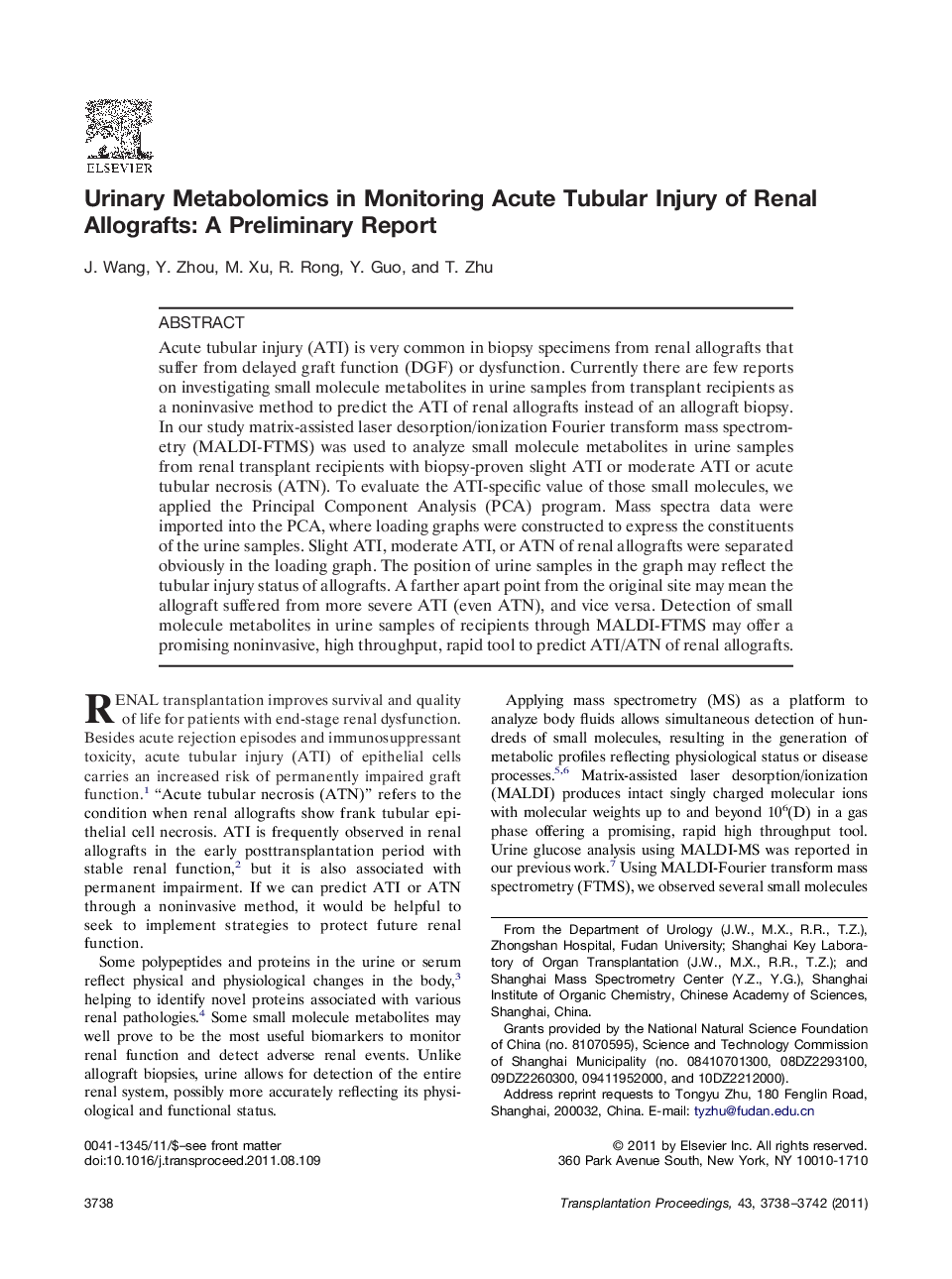| Article ID | Journal | Published Year | Pages | File Type |
|---|---|---|---|---|
| 6248951 | Transplantation Proceedings | 2011 | 5 Pages |
Abstract
Acute tubular injury (ATI) is very common in biopsy specimens from renal allografts that suffer from delayed graft function (DGF) or dysfunction. Currently there are few reports on investigating small molecule metabolites in urine samples from transplant recipients as a noninvasive method to predict the ATI of renal allografts instead of an allograft biopsy. In our study matrix-assisted laser desorption/ionization Fourier transform mass spectrometry (MALDI-FTMS) was used to analyze small molecule metabolites in urine samples from renal transplant recipients with biopsy-proven slight ATI or moderate ATI or acute tubular necrosis (ATN). To evaluate the ATI-specific value of those small molecules, we applied the Principal Component Analysis (PCA) program. Mass spectra data were imported into the PCA, where loading graphs were constructed to express the constituents of the urine samples. Slight ATI, moderate ATI, or ATN of renal allografts were separated obviously in the loading graph. The position of urine samples in the graph may reflect the tubular injury status of allografts. A farther apart point from the original site may mean the allograft suffered from more severe ATI (even ATN), and vice versa. Detection of small molecule metabolites in urine samples of recipients through MALDI-FTMS may offer a promising noninvasive, high throughput, rapid tool to predict ATI/ATN of renal allografts.
Related Topics
Health Sciences
Medicine and Dentistry
Surgery
Authors
J. Wang, Y. Zhou, M. Xu, R. Rong, Y. Guo, T. Zhu,
